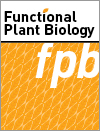FP25200Green-synthesized ZnO and MgO nanoparticles modulate physiology and antioxidant defense in maize under alkaline stress
Green-synthesized ZnO and MgO nanoparticles, produced using neem and licorice extracts, improved maize tolerance to alkaline stress. Moderate doses enhanced growth, photosynthetic pigments, antioxidant enzymes, and osmolytes and reduced oxidative damage (MDA, H2O2, RMP). Excessive nanoparticle concentrations were phytotoxic. Findings suggest nanoparticle-based strategies can enhance crop resilience and promote sustainable agriculture in alkaline soils.
This article belongs to the collection: Soil Microbiome and Abiotic Stress Tolerance in Plants.
FP25200 Abstract | FP25200 Full Text | FP25200PDF (5.2 MB) | FP25200Supplementary Material (2.6 MB) Open Access Article






